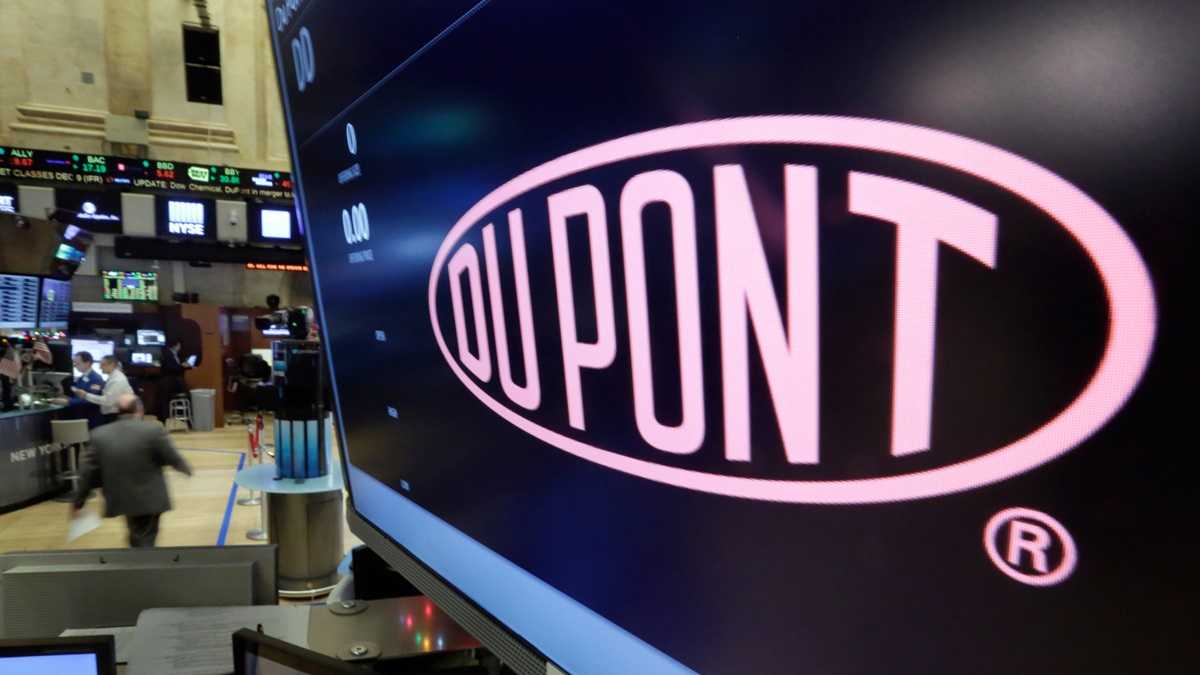Delaware’s new DuPont reality

(AP Photo/Richard Drew)
Reality is setting in following stunning news of Delaware’s successful effort to land the headquarters of the combined DowDuPont agriculture business.
Here is Doug Rainey’s commentary:
Reality is setting in following stunning news of Delaware’s successful effort to land the headquarters of the combined DowDuPont agriculture business.
Under the current plan, Dow and DuPont will merge later this year, with the combined company splitting up into three entities.
Now, two of the businesses, specialty products and agriculture will be based in Delaware, with combined sales of the two entities in excess of those of present-day DuPont.
The decision was a big victory for the state with implications that go beyond the actual economic impact.
The deal bolsters the legacy of Gov. Jack Markell, who has calmly guided the state through what has been its most difficult economy since the early days of Gov. Pete duPont’s administration in the 1970s.
Markell is comfortable in dealing with tough-minded CEOs like DuPont’s Edward Breen. Experts from throughout the corporate and government sectors also went to work, a News Journal account indicated.
The afterglow of the victory began to fade over the weekend as the dots were connected on the price of keeping DuPont in the state.
A number of media posts expressed disgust over the deal and the Philadelphia media downplayed the economic impact.
The biggest incentive came earlier this year when the General Assembly passed the Delaware Competes legislation that made needed reforms in the state’s corporate tax structure. The changes won’t be cheap, adding up to about $50 million over the next several years.
The changes were not all aimed at DuPont. We could see other headquarters remain or move to Delaware with a tax structure that more closely reflects the model in other states. The state is also working to keep several hundred jobs at recent DuPont spin-off Chemours.
The state also offered other incentives, many of which will kick in if the company invests $200 million in modernizing dated research sites.
A “back of the envelope” calculation indicates that the various changes related to keeping DuPont add up to about $12,000 per job with a payback time eight years in the form of income tax payments and a shorter period of time if other benefits are calculated.
Those seeking quicker returns will be disappointed.
In the current environment, corporate headquarters are streamlined affairs with a small number of staffers working under the CEO and other top officers.
An analyst who follows Dow and DuPont stock said the headquarters of the agricultural operation will employ 100 or so. You could plug in similar numbers for the specialty products business.
The jobs are a mere a blip regarding economic impact, even when the six and seven figure paychecks of some of those working at the site are considered.
Most of the operational end of the agricultural operation will remain in Indiana and Iowa.
Finally, keep in mind that DuPont has already cut 1,700 jobs in Delaware.
The biggest pluses coming out of the DowDuPont announcement will come in the important but vague area of prestige and improved chances for research jobs staying in the state.
Also encouraging were statements from those involved indicating that DuPont is not walking away from research and development work in Delaware in spite of major cuts made at Stine-Haskell in Newark and the Experimental Station near Wilmington.
DuPont CEO Breen has continued to insist that the DowDuPont combination is not backing away from research and development, following criticism of the cuts from some quarters.
Making the case that DuPont has not been stripped of its ability to come up with possible breakthroughs is a key part of the strategy of Breen and outgoing Dow CEO Andrew Liveris to convince Wall Street that the DowDuPont deal will work in the short to medium term.
DuPont shares are now trading at $61 a share, well below the $80 recorded in March of last year as activist investor Nelson Peltz made an unsuccessful bid to put his slate of directors on the DuPont board.
Peltz lost, but DuPont’s slate of directors that included Breen came on board. As the stock price slid, CEO Ellen Kullman retired and was replaced by Breen.
Investors are clearly taking a wait and see attitude on whether the deal will lead to the projected savings and synergies.
With the news on Friday, the fate of Delaware’s investment in retaining DuPont is now tied to that stock price and the success of the spin-off companies.
——-
Doug Rainey is the editor of the Delaware Business Now. He has reported on Delaware business for 25 years. Email Doug at drainey@delawarebusinessdaily.com Follow Doug on twitter: https://twitter.com/DougRaineyDE
WHYY is your source for fact-based, in-depth journalism and information. As a nonprofit organization, we rely on financial support from readers like you. Please give today.




